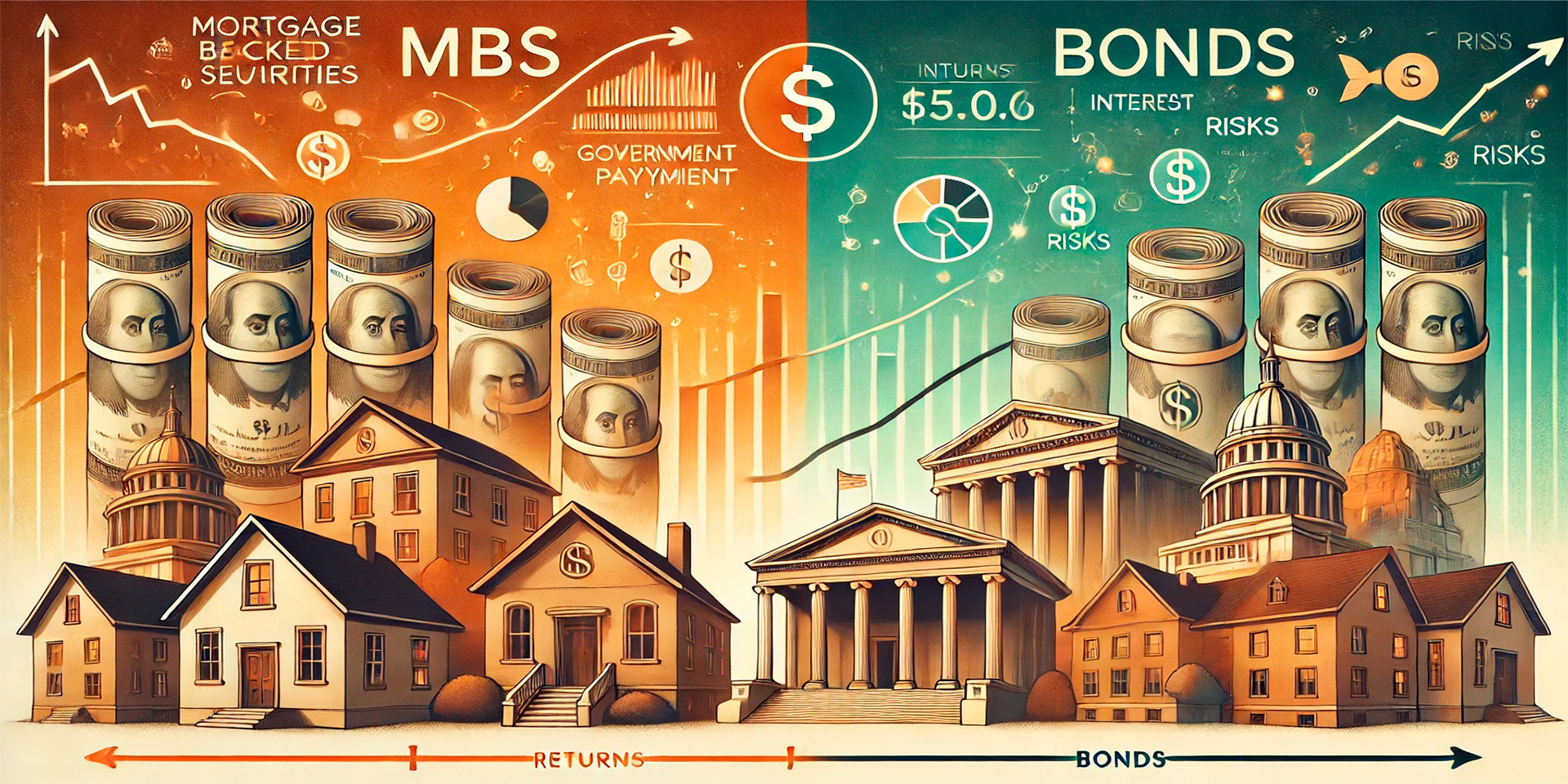Index funds have become one of the most popular investment options for both beginners and experienced investors alike. Offering simplicity, diversification, and low costs, they provide an efficient way to build wealth without the need for active stock-picking. For those new to investing, index funds offer an easy entry point into the stock market with reduced risk compared to individual stocks.
An index fund is a type of mutual fund or exchange-traded fund (ETF) that aims to replicate the performance of a specific market index, such as the S&P 500 or the Dow Jones Industrial Average. Instead of trying to beat the market by selecting individual stocks, index funds match the market by holding all (or a representative sample) of the securities in a given index. This approach not only minimizes fees but also simplifies the investment process, making it an ideal choice for long-term investors.
Why Index Funds Are Ideal for Beginners
Index funds offer several advantages that make them particularly attractive to beginners. Their low-cost structure, diversification benefits, and ease of use provide a solid foundation for new investors to build a portfolio.
Low-Cost Structure
One of the key advantages of index funds is their low expense ratios. Since these funds are passively managed, meaning they don’t require an active manager to select stocks, the cost of running the fund is significantly lower than actively managed funds. This cost savings is passed on to investors.
- Expense ratios: Index funds typically have expense ratios ranging from 0.05% to 0.25%, compared to actively managed funds, which can charge 1% or more annually. Over time, these lower costs can make a substantial difference in your overall returns.
- No frequent trading: Because index funds aim to track an index rather than outperform it, there is little trading activity within the fund, resulting in fewer transaction costs and lower taxes for investors.
Low fees are crucial for maximizing your investment returns, and index funds offer one of the most cost-effective ways to invest in the market.
Diversification
Diversification is a fundamental principle of investing, and index funds provide broad exposure to a wide range of companies, sectors, and asset classes. Instead of putting all your money into a few individual stocks, you invest in a broad market index that spreads your risk across hundreds or even thousands of companies.
- Broad market exposure: For example, the S&P 500 index fund gives you exposure to 500 of the largest U.S. companies across various sectors, while a total stock market index fund provides access to the entire U.S. stock market, including small, mid, and large-cap stocks.
- International diversification: Some index funds track global indices, providing exposure to international markets and allowing you to diversify beyond the U.S. economy.
By holding a diverse range of stocks within an index, you reduce the risk associated with any single company’s poor performance, making index funds a safer option for beginner investors.
Ease of Use and Simplicity
One of the most appealing aspects of index funds is their simplicity. You don’t need to spend time researching individual stocks or trying to predict market trends. Instead, you can invest in an index fund and let it track the market automatically.
- No need to time the market: Index funds are designed for long-term investing, meaning you can invest consistently over time without worrying about short-term market fluctuations. This “set it and forget it” approach reduces the stress of active management.
- Automatic diversification: With one purchase, you get exposure to an entire index, making it easier to achieve a balanced portfolio without the complexity of selecting individual stocks or managing multiple investments.
The hands-off nature of index funds makes them perfect for beginners who may not have the time, expertise, or desire to actively manage their investments.

How Index Funds Work
At its core, an index fund is designed to mirror the performance of a specific index by holding the same stocks in the same proportions. Here’s how they operate:
Tracking an Index
Each index fund follows a specific market index, which is a collection of stocks representing a segment of the market. For example, the S&P 500 tracks the 500 largest publicly traded companies in the U.S., while the Nasdaq 100 tracks 100 of the largest non-financial companies listed on the Nasdaq exchange.
- Replication: Most index funds replicate their index by buying all the stocks in the index in the same proportion. For example, if Apple makes up 5% of the S&P 500, the S&P 500 index fund will allocate 5% of its assets to Apple shares.
- Tracking error: While index funds aim to mirror their index as closely as possible, minor differences in performance (known as tracking error) can occur due to factors like fund expenses or slight variations in holdings.
Because index funds are passively managed, they don’t require a fund manager to research or select stocks. This allows them to keep fees low while offering broad market exposure.
Automatic Rebalancing
As the value of individual stocks within an index fluctuates, the index fund automatically rebalances its holdings to match the index. This ensures that the fund continues to track the index accurately without any manual intervention from the investor.
- Rebalancing: For example, if a stock’s market value increases and it takes up a larger percentage of the index, the fund will adjust its holdings to reflect this change. Conversely, if a stock decreases in value, the fund will reduce its holdings in that stock.
- Dividends: Many index funds also reinvest dividends from the companies within the index, providing an additional return to investors through compounded growth.
The automatic rebalancing feature of index funds helps maintain alignment with the underlying index, making it easy for investors to stay diversified over time.
Common Types of Index Funds
There are several different types of index funds, each designed to track a specific part of the market. Choosing the right one depends on your investment goals and risk tolerance.
Total Stock Market Index Funds
Total stock market index funds offer the broadest exposure to the U.S. stock market by tracking indices that include thousands of stocks across all sectors and market capitalizations (large, mid, and small-cap).
- Example: The Vanguard Total Stock Market Index Fund (VTSAX) tracks the CRSP U.S. Total Market Index, which includes over 3,500 stocks.
- Best for: Investors looking for broad exposure to the entire U.S. market with minimal risk tied to any single sector.
Total stock market index funds are a good choice for those who want to invest in the overall performance of the U.S. economy without focusing on specific sectors or companies.
S&P 500 Index Funds
S&P 500 index funds focus on the 500 largest companies in the U.S., providing exposure to some of the most established and successful businesses across industries such as technology, healthcare, and finance.
- Example: The Fidelity 500 Index Fund (FXAIX) tracks the S&P 500, representing 500 large-cap stocks.
- Best for: Investors who want to invest in large, stable companies and benefit from the long-term growth of blue-chip stocks.
The S&P 500 is often seen as a benchmark for the overall performance of the U.S. stock market, making it a reliable choice for long-term growth.
International Index Funds
International index funds offer exposure to global markets outside the U.S., allowing investors to diversify their portfolios with international stocks.
- Example: The Vanguard FTSE All-World ex-U.S. Index Fund (VFWAX) tracks a broad index of stocks from developed and emerging markets outside the U.S.
- Best for: Investors seeking geographic diversification and exposure to global economic growth.
International index funds help balance the risk of investing solely in the U.S. market by providing exposure to international companies and economies.

How to Start Investing in Index Funds
Investing in index funds is straightforward and accessible to most investors. Here’s a step-by-step guide to getting started:
1. Set Your Investment Goals
Before you start investing, determine your financial goals. Are you saving for retirement, building a college fund, or investing for general wealth-building? Your goals will help you decide how much to invest, which types of index funds to choose, and your investment timeline.
- Long-term growth: If you’re investing for retirement or other long-term goals, broad market index funds like the S&P 500 or total stock market funds may be the best fit.
- Risk tolerance: Consider your risk tolerance. If you’re comfortable with more risk, you might include small-cap or international index funds in your portfolio. For more conservative investors, a mix of bonds and stock index funds might be appropriate.
Having clear goals will help guide your investment strategy and ensure you choose the right index funds for your needs.
2. Choose an Investment Platform
You’ll need a brokerage account to buy index funds. Most major brokerages, such as Vanguard, Fidelity, Schwab, and E*TRADE, offer a wide selection of index funds. Many of these platforms allow you to start investing with low minimums or no account fees.
- Robo-advisors: If you prefer a hands-off approach, consider using a robo-advisor like Betterment or Wealthfront. These platforms create a diversified portfolio of index funds for you, based on your risk tolerance and goals.
- Direct index fund purchases: Some fund companies, like Vanguard, allow you to purchase index funds directly without going through a third-party brokerage.
Choosing the right platform will depend on your preferences, investment style, and the level of control you want over your investments.
3. Invest Regularly with Dollar-Cost Averaging
One of the best ways to invest in index funds is by using a strategy called dollar-cost averaging. This involves investing a fixed amount of money at regular intervals, regardless of the market’s current price. Over time, this strategy helps smooth out the price you pay for shares, reducing the impact of market volatility.
- Example: Instead of investing $10,000 all at once, you might invest $500 each month. This way, you buy more shares when prices are low and fewer shares when prices are high, lowering your average purchase price over time.
- Automation: Many brokerage platforms allow you to automate your investments, making it easy to consistently invest without having to manually execute trades.
Dollar-cost averaging ensures that you’re steadily building your investment over time, regardless of short-term market fluctuations.
Managing Risk with Index Funds
While index funds are generally lower risk compared to individual stocks, they are not without risk. Market downturns, economic recessions, or industry-specific issues can still impact your investments. However, there are strategies you can use to manage these risks.
Long-Term Focus
Index funds are best suited for long-term investing, as they are designed to track the overall market over time. While short-term fluctuations can occur, the market has historically trended upwards over extended periods.
- Patience: During market downturns, it’s important to stay invested and avoid panic selling. Trying to time the market can lead to missed opportunities and lower returns.
- Time in the market: The longer you stay invested, the more likely you are to benefit from the market’s overall growth and the power of compounding.
Staying focused on your long-term goals helps reduce the emotional impact of short-term volatility.
Rebalance Your Portfolio
Over time, your portfolio’s allocation may shift due to market performance. For example, if stocks perform well, your stock index funds may take up a larger portion of your portfolio than intended. Regularly rebalancing your portfolio helps maintain your desired risk level.
- How to rebalance: You can rebalance by selling some of your overperforming assets (such as stocks) and buying more of your underperforming assets (such as bonds) to return your portfolio to its target allocation.
- Frequency: Most experts recommend rebalancing once or twice a year, or when your portfolio’s allocation drifts by more than 5% from your target.
Rebalancing ensures that your portfolio remains aligned with your investment goals and risk tolerance over time.
Final Thoughts: The Power of Index Funds for Low-Cost Investing
Index funds offer a simple, cost-effective way to invest in the stock market, making them an ideal choice for beginners and experienced investors alike. With their low fees, automatic diversification, and ease of use, index funds allow you to build wealth over time without the complexities of active stock-picking.
By focusing on long-term growth, reinvesting dividends, and staying disciplined with a dollar-cost averaging strategy, you can maximize your returns and achieve your financial goals. Whether you’re saving for retirement or building wealth for the future, index funds provide a solid foundation for successful, low-cost investing.




